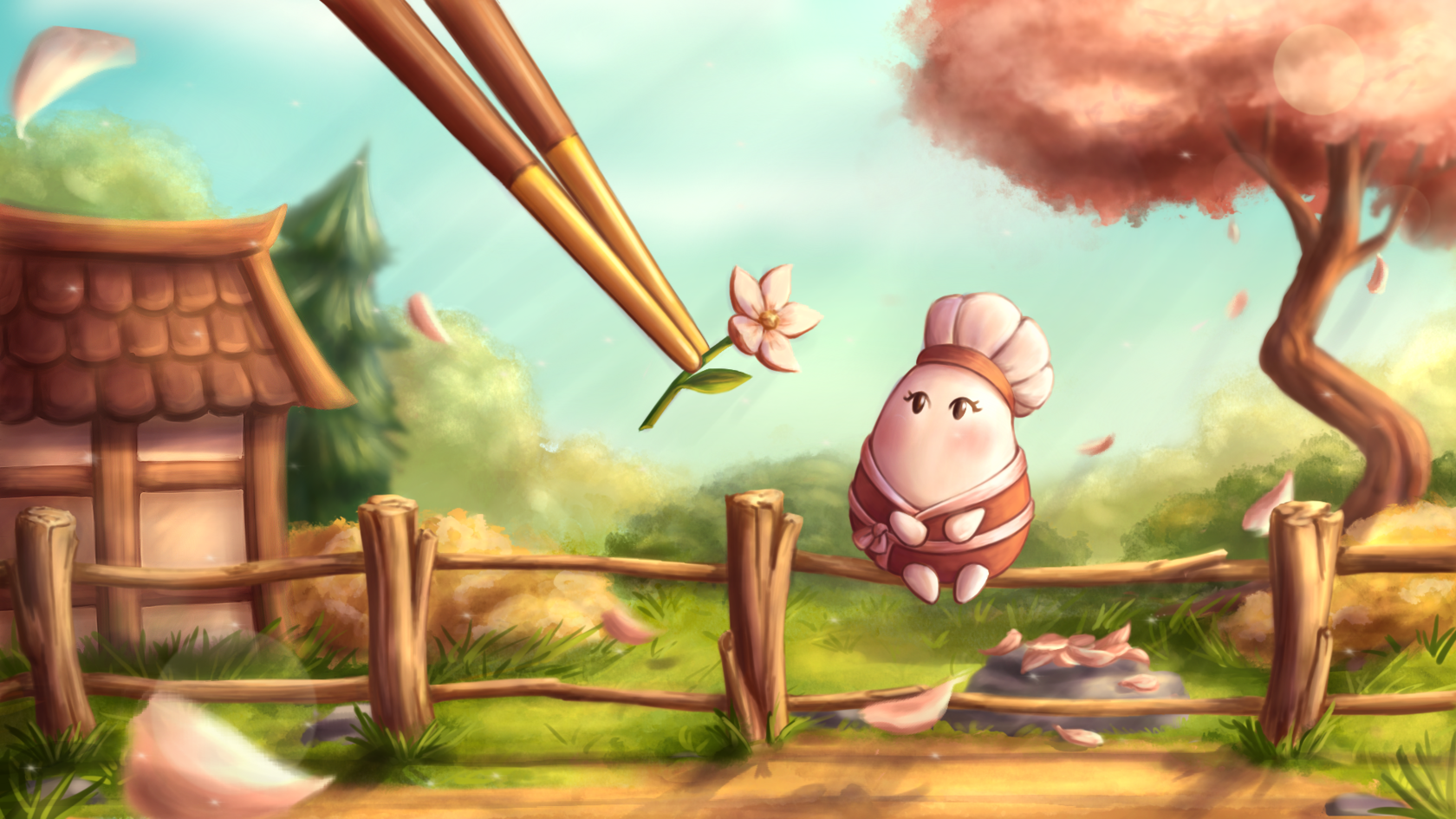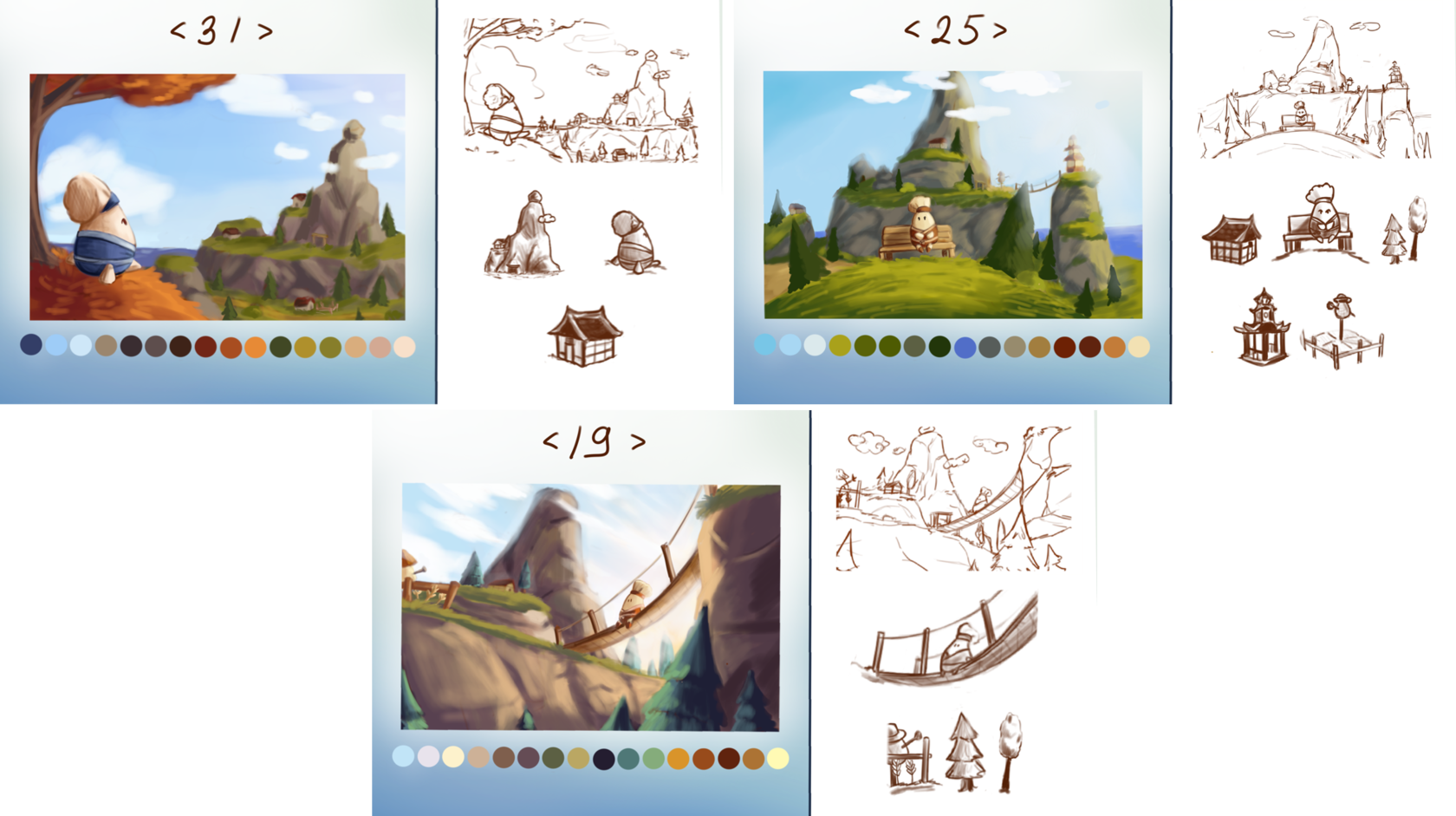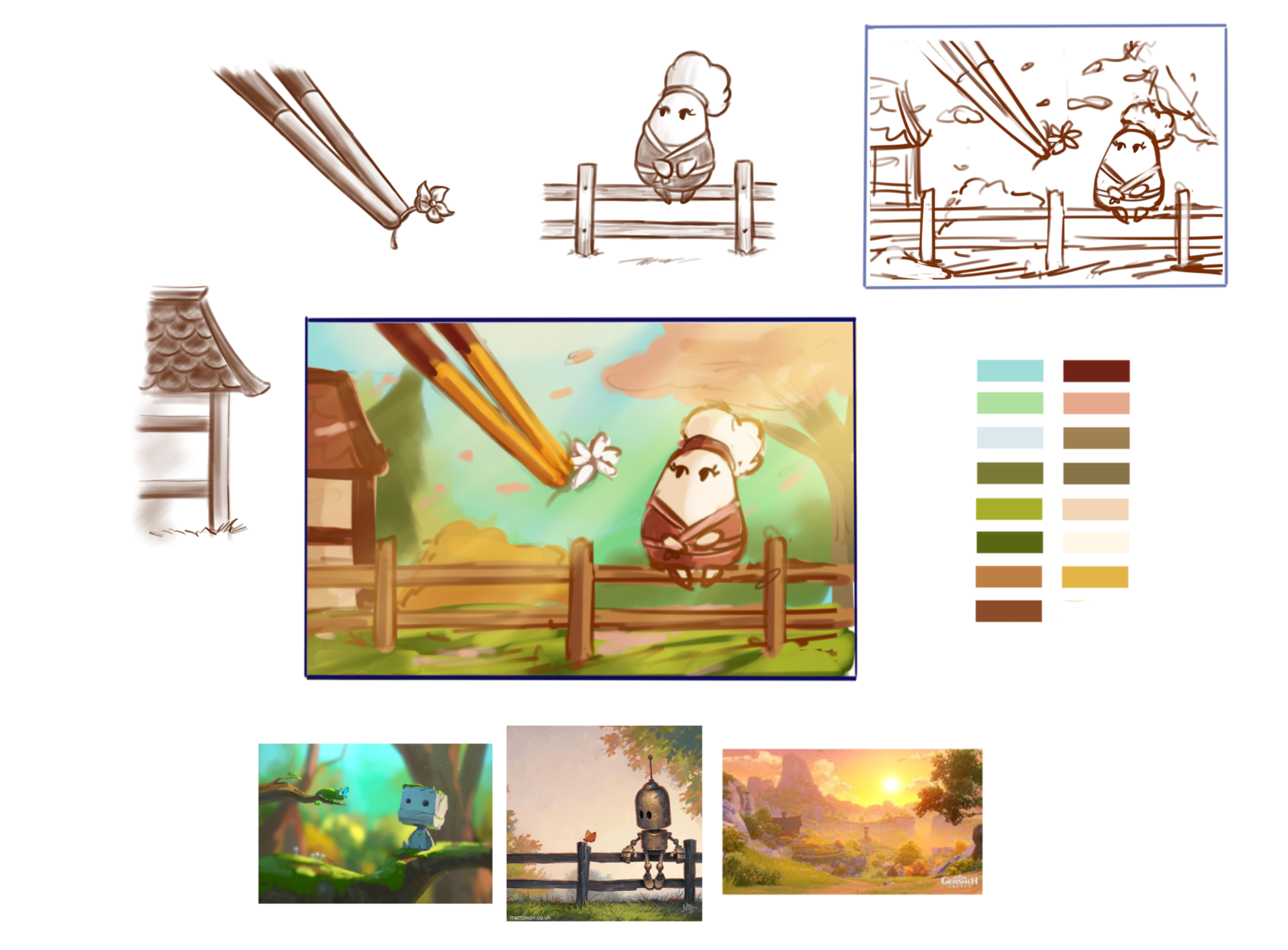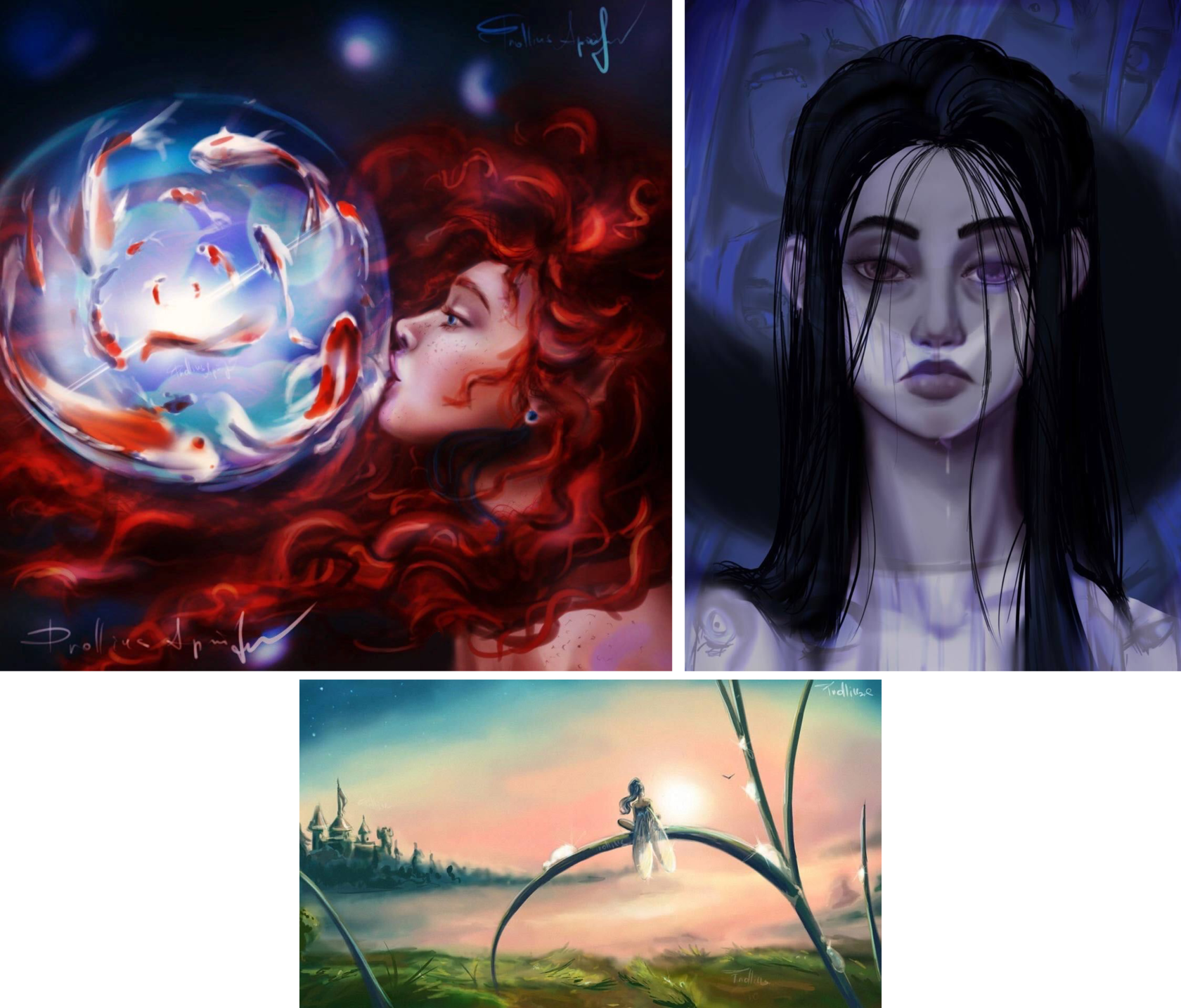“Everything around me is my inspiration”
Video game art could be described as a separate art form, with its own features, context, and peculiarities. Every artist has their own approach to creating art. We talked about all this (and more) with a 2D artist on the Tiny Island project.
Mila Ponomareva (hereafter MP): Tell us about your job. What do you do and for what project?
Aleksandra Artamchuk (hereafter AA): I’m a 2D artist on Tiny Island. I draw concept art, model textures, and create various promo materials. Speaking of which, I’m especially proud of some promo art for the game dedicated to multiple topics at once: the Steam spring sale, a new game update, and, naturally, the beginning of spring.
Mila Ponomareva (hereafter MP): Tell us about your job. What do you do and for what project?
Aleksandra Artamchuk (hereafter AA): I’m a 2D artist on Tiny Island. I draw concept art, model textures, and create various promo materials. Speaking of which, I’m especially proud of some promo art for the game dedicated to multiple topics at once: the Steam spring sale, a new game update, and, naturally, the beginning of spring.

Tiny Island spring art
MP: It looks lovely! Tell us how you created it.
AA: Thanks! It was a very unusual task. The outline went something like this: “Sasha, we need a cute piece with a warm and pleasant atmosphere, and, of course, it should be an emotional rollercoaster for the viewer... in the good sense.” Other than that, I had full creative control and an opportunity to experiment.
On the one hand, it’s great: you’re happy when you let your imagination run wild. On the other, you start asking yourself: Damn, what do I actually draw? Where do I begin? What do I do?”
MP: It’s very rare for artists to get free range to do anything.
AA: Exactly! I’ve been working at Geeky House for almost a year, and I got used to always having a clear project plan, detailed design specs, and requirements for the art. But I didn’t lose my head! My past freelance experience was a big help: I used to have clients like, say, musicians who want to get cool art but their requests are always full of feelings and no details. In cases like this, you have to make a plan for yourself, do your research, and only then begin sketching.
Going back to the art for Tiny Island, initial questions for myself went something like this: What kind of atmosphere do I want to convey? What kind of promo art do our competitors produce? What were they trying to convey in their art? What do people consider cute?
MP: How did your research go from there?
AA: I looked for and analyzed art for video games with an atmosphere similar to our project. I asked friends, relatives, and colleagues about what they consider cute, using games, cartoons, children’s books, and images found online as examples. I watched videos and gameplay recordings of Tiny Island to get a better feel for it. And, of course, I looked for a suitable palette, references, camera angles, and ideas. From all that, I created a mood board and started sketching from there.
I outlined three ‘themes’ for the sketches: reflecting the beauty and vastness of the game’s world, making it look inviting and interesting to the player; conveying a sense of serenity; and establishing a warm and friendly relationship between the player and the world of Tiny Island.

I finally decided the last theme was the most important one. Plus, one of my sketches stood out with its atmosphere and energy even at the early stages.
MP: What were your inspirations?
AA: Searching for inspiration, I did 5-minute sessions, searching online for something suitable. I’d often find work from other artists depicting tiny stylized mushrooms, animals, and chibi characters. “Ohhh, so cute!” I’d think. That would give me an idea of what the character should look like, but I had one problem: how to depict the whole thing?
Illustrations need a story; it could be small, but it has to be organic. What helped me was an illustration by Matt Dixon called “Butterfly Effect”. It depicts a robot and a butterfly that helps and supports it in its loneliness. That motif of unexpected support felt like it fit my chosen theme exactly, it represented the idea of friendly interaction between the player and the world of Tiny Island.

It’s lovely when there’s somebody who can always come to your aid, support you and send some kindness your way. It creates a warm, fuzzy feeling. That was the atmosphere I wanted to convey in the promo art. A god holding chopsticks treats his dumplings with warmth and care and the god’s friends treasure his kindness.
I finished my sketches and showed them to my colleagues. I was extremely curious to hear which one they’d like best, and they chose the dumpling on the fence!

Mood board of the final variant
MP: What a great story! Did you run into any other difficulties while working on this piece?
AA: I don’t think so. As I said, the biggest challenge was the lack of specific requirements. Having clear specifications makes it easier to find references and create illustrations.
MP: What do ideal design specifications for art look like?
AA: We have a brief for artists that basically describes everything design specifications should include and everything you need to tell the artist before they begin working:
- What the art is for: whether it’s going to be promo material, in-game graphics, or something else.
- Style: comic book, sketching, etc.
- What to draw: a short background, the mood, and atmosphere, everything that could help make the art look right. And, of course, references for the story, colors, symbolism, and such.
- Technical requirements and recommendations: for example, make sure the characters and the props are separated, because they’re going to be animated.
- Deadline — the most important point!
Once I have information for all these points, I know what my task is, I can handle it quickly and avoid going in the wrong direction.
MP: What are your favorite art pieces that aren’t connected to Tiny Island?
AA: I have a few personal pieces that I can confidently say I’m very proud of. These are “The Birth of Carps,” “Funnel of Feelings” and “A Small Fly’s Morning.”

MP: How do you find inspiration?
AA: Everything around me is my inspiration: movies, cartoons, books, games, comics, work from other artists, photos, music, memes, stories from people’s lives, everyday life, nature, and cities. Literally everything!
The way I see it, inspiration is a trove of knowledge that lets you see the exceptional in the pedestrian. I like to just sit down and look around, trying to notice something others may miss. It’s like that TikTok meme where the guy is sitting, sipping from a mug, then he looks at the window and suddenly says, “F*** (darn)! That window is f******* (rather) awesome!” For some people, it’s just a window, and for others, it’s an elegant little door into a magical world.
MP: How can somebody start making art for video games and make it their job?
AA: Participate in jams! It’s a quick way to decide if you want to work in the video game industry. In game jams, you’ll be able to gain experience working in a team, polish up your skills, get a project for your portfolio (which you’ll be able to improve after the jam), and meet people from the industry.
If you’ve firmly decided to work with video games, all you have to do is act. Attend courses, practice, respond to job openings that seem interesting, and complete test tasks. If they reject you, don’t worry: ask for constructive criticism, fix your mistakes, and move on.
Learn, work on yourself, practice, assemble a good portfolio, and one day you’ll get the job.
Experience is the most important thing, and you can only get it through trial and error and working on yourself!


